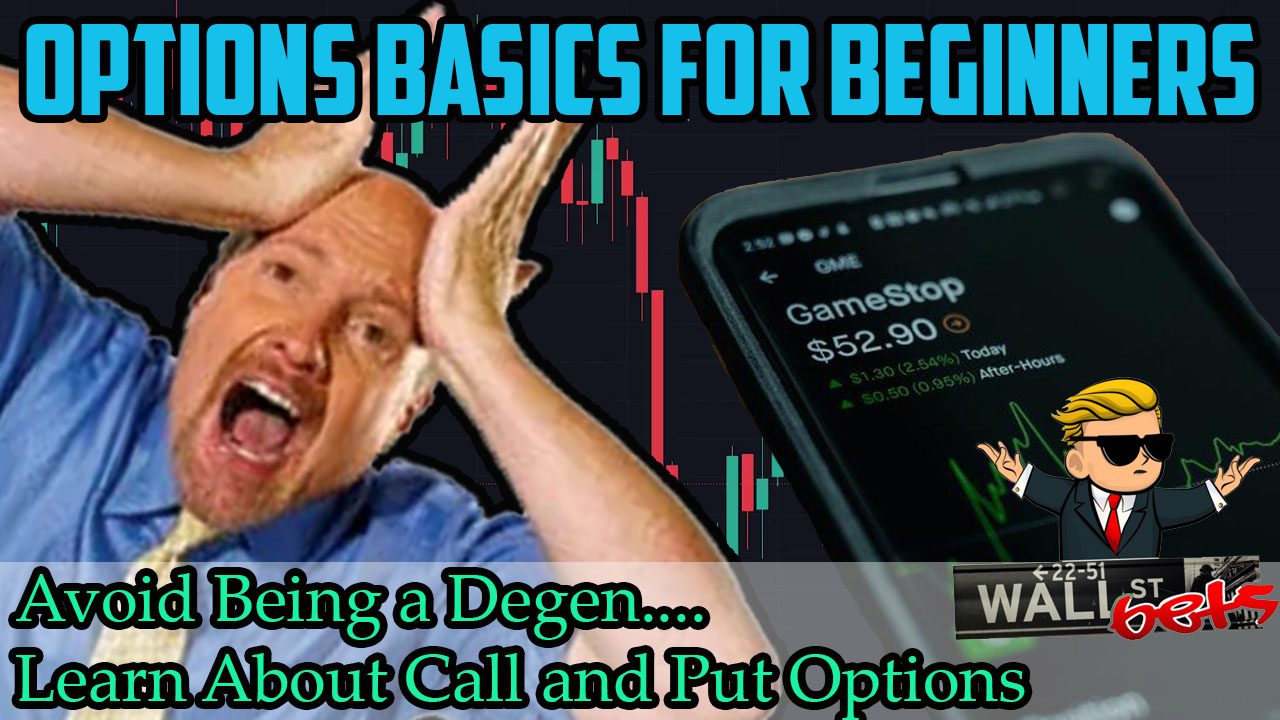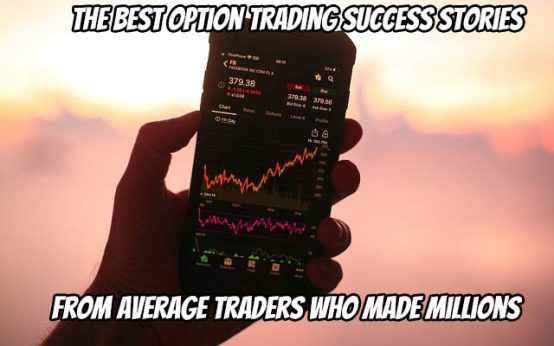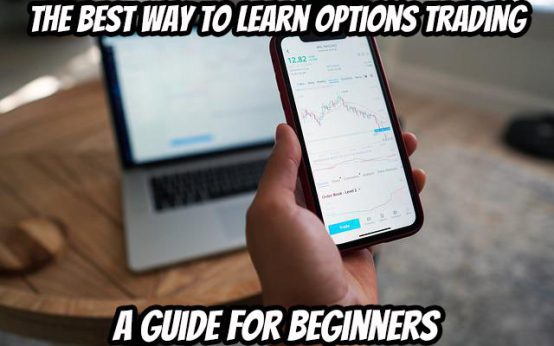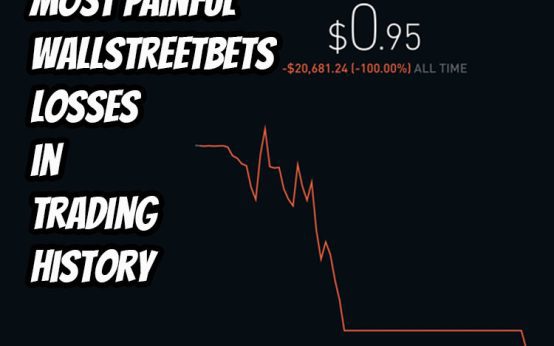Today in this video on options basics for beginners, I’m going to show you how to avoid becoming like this degenerate gambler.
Hi…it’s Minister of Capitalism here and in this video on options basics for beginners, I’m going to go explain what call and put options are and I’ll show you specific examples to make sure everything it totally clear.
And then I’m going to show you how degenerative gamblers – uhhh, i mean degenerative gamblers, uhhh i mean degenerative gamblers ah! I mean degenerative OPTIONS TRADERS get sucked into buying the wrong options.
But I’m not here to judge. Even though according to the stock platform Etoro – I’m sure they’re completely reputable and above board… anyways pause Etoro found that a whopping 80% of new traders lose money.
But you’re here to learn about options BEFORE you trade….so you’re already doing better than most of the new traders out there who watch a YouTube video and throw their money in the ring.
But before we continue, I was told by some YouTube guru that I should ask you to – in his words – “smash” the subscribe notification or whatever.
Apparently that helps you get noticed in a sea of a billion other YouTube videos.
But who really knows…
Anyways, let’s get into this.
Let’s start this options trading video by explaining what – exactly – an option is.
Simply defined, an option is a contract that gives you the right to buy or sell a stock at a certain price, on or before a certain date.
The “certain price” is called the strike price and the “certain date” is called the expiration date.
They look like this when spotted in their natural habitat which is called an options chain:
An Options’ Natural Habitat
Speaking of natural habitat, working from home sometimes feels like being sent to solitary confinement inside a low security prison.
Sure, you can leave if you want to….but you don’t get to see anyone.
And they monitor everything you do, so you can’t just duck out and chat with the pretty receptionist like you used to.
Ahhh, the good old days.
I’ve resorted to doing push ups to break up the day, except I’m getting a little top heavy now.
I might have to do something about that.
Getting Back On Topic…
Anyways, getting back to the subject at hand…. there are two types of options contracts you can buy and they are: call and put options.
Calls give you the right – but not the obligation – to buy a stock at a certain price (remember that’s the strike price) at or before the expiration date.
Puts are just the opposite, as they give you the right – but not the obligation – to sell a stock at a certain price at or before the expiration date.
To keep things simple here, we’re only going to talk about buying options right now. Maybe in a future video we’ll talk about selling options.
Now it’s time to look at an example.
So here I’ve pulled up the list of available options for Tesla. Because, well, everyone seems to love Tesla.
The Options Chain
Remember, this list of all the available options for a stock is called an options chain.
Here we can see the Calls on the left hand side and the Puts on the right hand side, with the Strike price in the middle.
Remember, the strike is the agreed upon price.
In the case of Calls, the strike is the price you think the the stock will be at or above when it reaches the expiration date.
So when you buy a call, you’re betting that the stock’s price will jump higher than the strike.
On the other hand, if you buy a put, you’re betting that the stock’s price will fall below the strike by the time the expiration date is reached.
If you buy calls and the price of the stock jumps above the strike, your trade is referred to as being “in the money.”
If you buy puts and the price of the stock falls below the strike, your trade is “in the money.”
And being in the money is what you’re after.
It’s what dreams are made of.
It’s a magical place… where – to quote Nicholas Cage from the movie “Gone in 60 seconds”: “Champagne falls from the heavens, doors open and velvet ropes part.”
Basically you get a few extra coins that you can throw into your swimming pool full of gold.
Crickets.
Ok, so you want all your trades to be in the money.
That’s the goal
Now, if your trade is NOT in the money when the expiration date hits, you lose the money you paid for the option contract.
The money that you pay for the option contract is called the premium, and the premium is the value on the options chain where it shows the Bid and ask price.
Call Your Broker
Now, exactly how options are settled when they’re in the money at expiration can vary from broker to broker – so you’ll want to look into that.
Generally speaking, if you don’t close a call option that’s in the money before it expires, you’re going to have to buy 100 shares of that stock for each contract you’ve bought.
If you don’t have the money in your account to do this, some brokers will automatically settle everything for you and charge you a fee.
If you bought a put contract, you’d end up being short 100 shares of the stock.
Again, your broker may close this out for you for a fee (No… no broker does anything for free. It’s always for fee.) but as I mentioned it’s important for you to understand how your broker will handle this situation or you can avoid all of that and make sure to close any options that are in the money have BEFORE they expire.
At this point of our basics of options trading for beginners video, you now know what call and put options are, what the strike price and expiration dates are, what the premium is, and you know that options all live inside what’s called an options chain.
Congratulations, you now know more about options
than half the degenerate traders out there
So why would you use options instead of just buying or shorting stock?
That’s a great question. And I’m glad you asked it.
The advantage of buying options over stocks is that options are leveraged.
Don’t forget, I promised to show you how degenerative OPTIONS TRADERS get sucked into buying the wrong options – that’s coming up soon – but for now you need to know that options are leveraged…. and that’s a big part of how they get sucked in.
The important thing to keep in mind is that each option contract typically controls 100 shares of stock.
So, if we go back to the Tesla options chain, this price here is what you would pay for each of the 100 shares you would control if you bought this Tesla call.
For example’s sake, let’s say you bought 1 Call contract at the 725 strike price for $17.56.
This would cost you $1756.
Now, if you had to buy 100 shares of Tesla while they’re trading at $729.49 each, that would cost you $72949.
You can see how much cheaper it is to buy 1 options contract than 100 shares of Tesla.
That’s the upside.
The downside is that if you buy an option contract and it doesn’t end up in the money, you would lose your $1756, whereas if you bought the shares of Tesla and the stock fell in value, you would still own them even if they dropped in price.
Sooo, when would you want to trade options?
So, as we’re going over the basics of options trading for beginners, this begs the question… when would you want to trade options?
Typically you would buy options if there is some event that you think is going to move the stock in a certain direction BEFORE a certain date.
For example, if you feel a stock has been unfairly beaten down, and you think it’s ready to bounce back up to a previous level within a month, rather than buying the stock, you could simply buy an options contract for a fraction of the cost.
Or you could buy options if a company is close to releasing their yearly earnings and you think the stock will move in a certain direction.
Or maybe you have a feeling that a pizza company’s founder is going to make a racist remark on an upcoming conference call and the stock will plummet.
Oh, wait. That happened.
Ok Instead of a hypothetical, let’s say that you think the majority of people on Wallstreetbets are a bunch of degenerates, and that they’re wrong most of the time.
You could head over to the Wallstreetbets reddit page, and see what the general consensus is on some stocks they’re talking about.
Or if you have access to a system that tracks this kind of thing you could look at that.
I’ve got access to one inside The Empirical Collective dot com, so I’ll login there.
Here they track over 7 different reddit boards that have over 19 million traders in them, analyze the posts and come up with the general sentiment of what the reddit degens think will happen.
So if you think everyone inside Wallstreet bets are a bunch of idiots, you could inverse their recommendations.
So if they are bullish on a certain stock, you could buy puts. Or if they are bearish, you could buy calls.
Of course, this isn’t financial advice and you probably want to do more due diligence on a trade than just this…but just for an example of how you can use call and put options, you get the idea.
Ok enough about Wallstreet bets
How about another example?
Say you love Tesla and have a lot of shares but you think that the price will go down.
Maybe you have the sneaking feeling that Elon Musk will go on the Joe Rogan show and smoke a joint, causing the share price to drop.
Oh, wait that already happened.
Ok, maybe you think Elon Musk will buy a huge social media company like Twitter, and shares of Tesla will crater 20%.
No, no… that’ happened too.
Well, regardless of the reason, because you adore Elon Musk, you can’t bear the thought of selling your shares.
So, instead of selling your beloved Tesla stock you could buy a put at a certain strike to protect yourself…. in case your premonition of Musk rocking the boat comes true.
To do this, if you owned 100 shares of Tesla, you would buy 1 put contract at the strike you think Tesla stock might fall below. (remember 1 option contract typically controls 100 shares)
Then if Tesla fell from grace below that strike, the money you made from the puts would help offset the drop in price on the shares of Tesla you hold.
Now, I promised you that I’d explain how degenerative OPTIONS TRADERS
get sucked into buying the wrong options.
It starts innocently enough, with a beginning option trader looking over the premium (remember the premium is the cost of the options contract) of a stock.
But as their eyes begin to wander to strike prices that are further and further out of the money, they notice that the option premium becomes cheaper and cheaper.
Shaking with excitement, they think, “Look at how cheap those are!”
Soon they find themselves drawn to a website like options profit calculator dot com where they start plugging in their trade ideas and fantasizing how much they’ll make.
They usually start by picking a stock or ETF that they think will move a lot.
Let’s say that they think the market will absolutely crash within a month.
Maybe they heard Jim Cramer screaming on CNBC that the market has been unfairly beaten down and that it’s about to rise from the ashes.
And as any seasoned degenerate knows, if Slippin’ Jimmy says something’s about to happen…. the best bet is to do the exact opposite.
This trade is affectionately referred to as The Inverse Cramer technique.
Cramer’s Kiss of Death
So the trader’s conviction is now sealed by Cramer’s kiss of death on the market, they head over to options profit calculator dot com and look up ticker SPY for the spider s&p 500 ETF.
Once there, they pull up the option chain for an expiration date about one month from today’s date and start looking over the puts once they’ve put in a price range for SPY to drop.
Breaking into a cold sweat, they start seeing all the profit they could make if their out of the money option ended up in the money.
They see how they could could turn $186 into $7581 in a month, all because Jim Cramer said something was about to go up.
Thanks Jimmy!
Suddenly, they start thinking of how they could finally buy that grilled cheese sandwich with the face of Virgin Mary.
Or maybe they go dark and start thinking of how they could buy some advertising for a fake job that painted their boss in a chauvinistic light, saying that he was looking for a waitress that could just “as easily be in a bikini on beach spinning heads” before topping it off by having a glitterbomb delivered to their boss’ home address.
No… nobody would ever do that
But you get the idea: this newly minted degen got sucked in when they saw how cheap the out of the money options are and what the potential payoff could be.
Hmmm…. but you have to admit. Those puts are really cheap. And its already dropped almost 18% since the start of the year….and all the news out there is bad…so if it dropped another 20%…..you’d make
Of course nobody but a gambler would think like that…
Of course, if we were using a TRULY degenerate example, the degenerate in question would probably be trading a 3x leveraged ETF rather than just a standard stock or ETF.
But in any case, it’s these kind of leveraged returns that often suck beginner traders into buying cheap out of the money options, and they end up losing all their money.
Do these sort of trades ever work out?
Sure, they can if you have big market moving events like an earnings report, a big news event, the sudden reversal of the economy, or Jim Cramer screaming, “BUY, BUY, BUY” about a certain stock.
But options like this are cheap for a reason… because they rarely pay off.
And that’s how people get sucked into losing their money when trading options.
Anyways I hope you’ve enjoyed our video on options basics for beginners and how we went over call and put options.
Oh ya, that YouTube guru guy said i needed to ask you to like and comment this video if you made it this far and enjoyed it.
If you’re new and don’t know how to find good option trades, you might want to look into companies that provide trade alerts. We’ve reviewed a lot in order to come up with what we feel is the best option alert service

 How to Paper Trade Options – Plus The 5 Best Free and Paid Trading Platforms
How to Paper Trade Options – Plus The 5 Best Free and Paid Trading Platforms  The Options Trading Mentor: Here’s How to Find the Best One for You
The Options Trading Mentor: Here’s How to Find the Best One for You  The Best Option Trading Success Stories from Average Traders Who Made Millions
The Best Option Trading Success Stories from Average Traders Who Made Millions  The Best Way to Learn Options Trading: A Guide for Beginners
The Best Way to Learn Options Trading: A Guide for Beginners  Here’s The Top WallStreetBets Sentiment Tool on The Market
Here’s The Top WallStreetBets Sentiment Tool on The Market  The Biggest and Most Painful WallStreetBets Losses in Trading History
The Biggest and Most Painful WallStreetBets Losses in Trading History